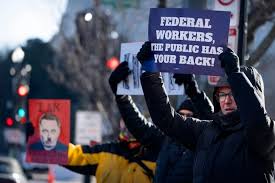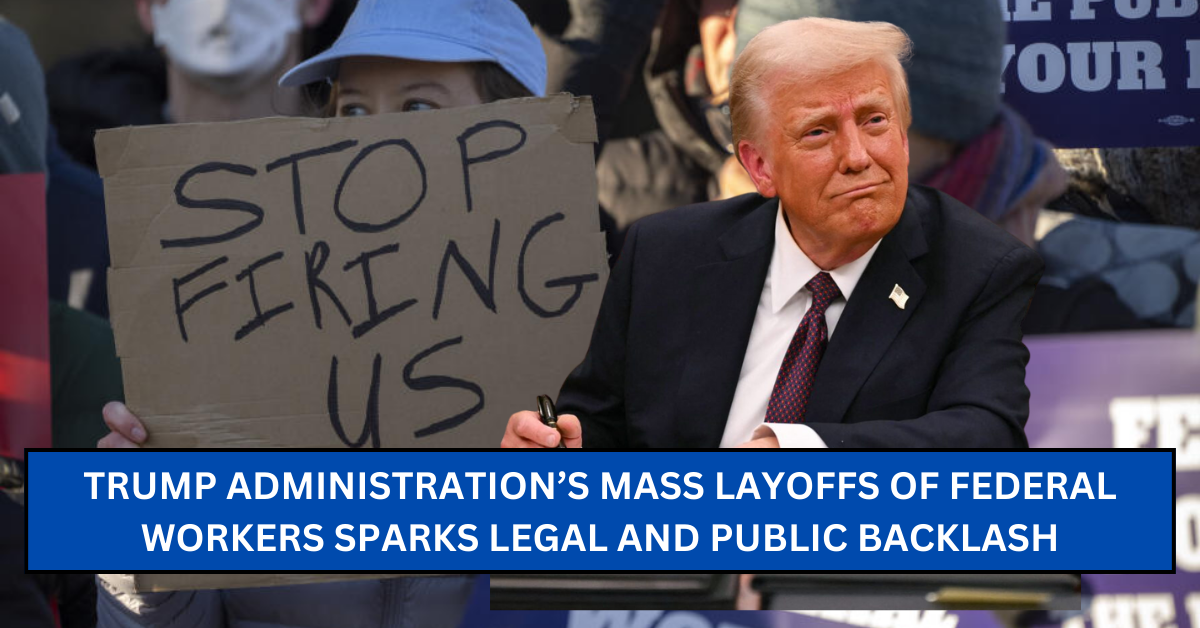Thousands of federal employees were caught off guard this week as the Trump administration initiated mass layoffs across multiple agencies. The sudden job cuts have led to anger, chaos, and legal challenges, with many workers given as little as 30 minutes to vacate their offices.
The layoffs, part of a broader effort to reduce government spending and streamline federal agencies, have ignited heated debates over the impact on public services, the legality of terminations, and the future of federal employment.
Federal Employees Sent Home with Little Warning
According to reports, many affected employees received abrupt termination notices, some through email or direct orders from supervisors. In some cases, workers were instructed to leave their desks immediately, taking only essential belongings before security escorted them out.
These layoffs have primarily affected probationary employees—those with less than a year of service—who do not have civil service protections. However, reports suggest that long-term employees have also been impacted.
Which Agencies Are Affected?
Federal agencies across the board have been impacted, but some of the hardest-hit departments include:
- Department of the Interior – significant cuts in natural resource management positions.
- Department of Veterans Affairs (VA) – layoffs affecting medical center staff and administrative personnel.
- U.S. Department of Agriculture (USDA) – reductions in rural development and environmental services.
- Environmental Protection Agency (EPA) – termination of 388 employees, including experts working on environmental justice and pollution tracking.

Legal Challenges and Union Opposition
Labor unions, including the National Treasury Employees Union, have filed legal challenges, arguing that the mass terminations violate due process and destabilize government operations. Some federal judges have issued temporary halts on layoffs in select cases, pending further review.
Legal experts suggest that affected employees may have grounds for appeals, especially if proper termination procedures were not followed.
Impact on Public Services
The layoffs have raised serious concerns about the continuity of essential public services. Key issues include:
- EPA losing staff involved in environmental protection efforts.
- The Sierra Avalanche Center reducing risk assessments due to cuts.
- VA medical centers facing staff shortages, affecting veterans’ healthcare.
With major federal agencies losing workers, the ability to maintain critical programs and services is now in question.
Employee Experiences: Fear and Uncertainty
Federal employees have expressed shock and frustration at how the layoffs were handled. Many had no prior warning, leaving them scrambling to find alternative employment.
One affected worker, Nicholas Detter, a natural resource specialist in Kansas, described the process as “slash and burn,” saying:
“I’ve given years of my life to public service, only to be dismissed without even a meeting or a proper explanation.”
Similarly, Andrew Lennox, a Marine veteran working at a VA medical center, said he was dismissed via email, describing the situation as “heartless and impersonal”.
Deferred Resignation Program Causes Confusion
The administration’s “Fork in the Road” deferred resignation program—designed to encourage voluntary departures—has also faced criticism. Some employees who accepted buyout offers found themselves unexpectedly terminated, despite agreements stating they would be paid through September 30.
The Office of Personnel Management (OPM) has since stated that errors in processing were made and that affected employees will have their agreements honored.

What Happens Next?
With lawsuits pending and public backlash growing, Congress may intervene to reassess the downsizing strategy. Some lawmakers have called for investigations into whether proper termination procedures were followed and how the layoffs will impact government functions.
Key considerations moving forward:
- Federal courts will rule on the legality of the layoffs.
- Labor unions will continue fighting for worker protections.
- Public services could be disrupted as agencies adjust to staff shortages.
Conclusion
The mass layoffs of federal employees have ignited a nationwide debate about government spending, worker protections, and the efficiency of public service operations.
While the administration argues that these reductions are necessary cost-cutting measures, labor unions, employees, and lawmakers warn that the sudden firings could destabilize essential government services.
As the situation unfolds, all eyes are on legal challenges, congressional oversight, and the long-term impact on federal operations.
For the latest developments on federal workforce policies and budget changes, visit Congressional Budget Office and U.S. Government Accountability Office.
This article has been carefully fact-checked by our editorial team to ensure accuracy and eliminate any misleading information. We are committed to maintaining the highest standards of integrity in our content.

A senior at Yale-NUS College with interests in developmental and labour economics, as well as creative non-fiction and poetry. Currently, I’m studying as an Economics major and an Arts and Humanities minor (focusing on Creative Writing) with heavy involvement in the Singaporean journalism scene and involved in research on economic history and educational policy. I’m working as an author for The Octant, Yale-NUS’ student publication, as a writer for Wingspan, Yale-NUS’ alumni magazine, and as a tutor for the NUS Libraries Writer’s Centre. | Linkedin




